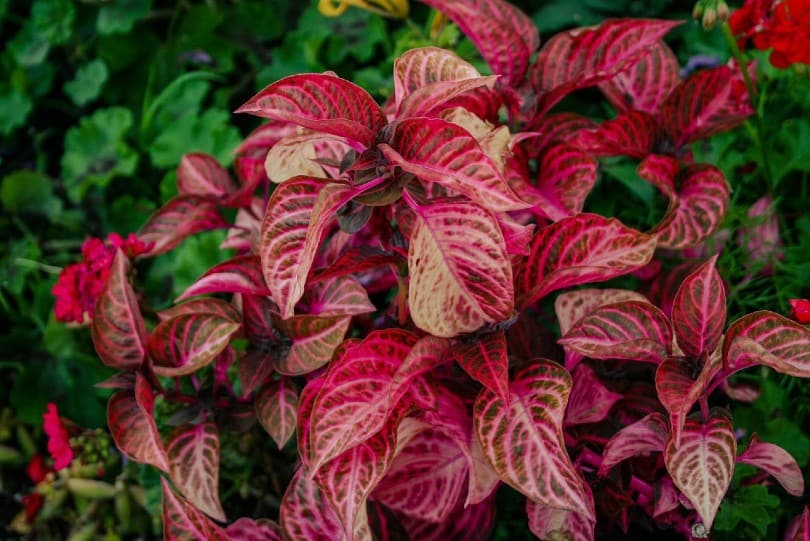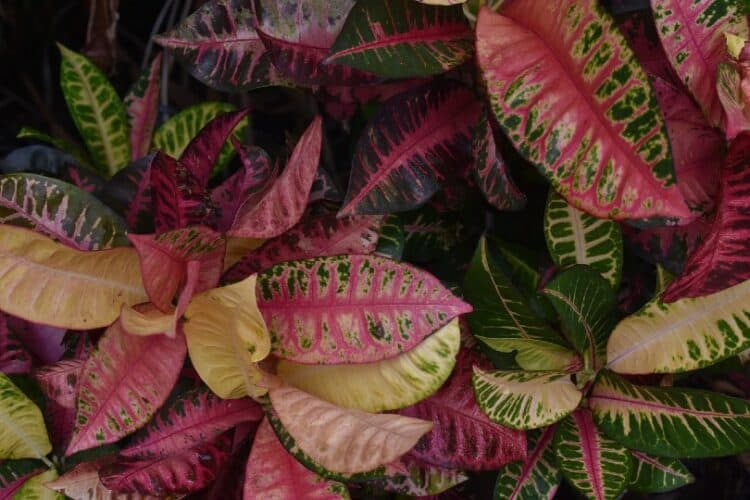Being a pet parent is a big responsibility. You need to ensure your pets eat well, have fresh, clean water, get regular checkups with their veterinarian, have toys, proper bedding, and of course, receive all the love. It’s also your job to make sure they are kept safe. When it comes to a cat, this can be extremely difficult. Cats are known for getting into things and being a complete handful.
For a cat, one of the most dangerous things in your home can be your plants. We all know they love to eat and chew on them. One popular indoor/outdoor plant due to its beauty and vivid colors is Croton. While these gorgeous plants may look good throughout your home, as a cat parent, you should learn about any plant you expose to your kitty. Are Crotons poisonous to cats? Yes, unfortunately, Crotons are quite toxic for your kitty. Let’s learn more about these plants and what to do if your cat happens to eat one.
What Is Croton?
Croton, also known as Codiaeum variegatum, are evergreen plants that like humid, dry areas. While most people choose to have these plants outdoors, where they are easier to tend, it’s not uncommon to see them indoors thanks to their beauty. Unfortunately, your cats can easily come in contact with Croton whether they are in the house or your outside garden.
There are several Croton varieties. Dreadlocks, Mona Lisa, Bush on Fire, and even Eleanor Roosevelt are all types of Croton plants. These plants, all forms of Croton, contain 5-deoxyingenol. This chemical is what makes the Croton plant harmful to animals and is found in the roots, stems, leaves, and even flowers of the plant. Crotons even emit a milky sap that can affect human skin and berries that can be toxic to children.
Signs of Croton Poisoning in Cats
Croton poisoning in cats can be quite dangerous. While it’s best to not let your cat be anywhere around these plants, knowing the signs of poisoning is imperative. If your cat has ingested any part of a Croton plant, these symptoms may appear:
- Vomiting
- Lethargy
- Diarrhea
- Depression
- Drooling
- Skin Irritation

What to Do If Your Cat Eats Croton
With the extreme danger Croton plants present to cats, as a responsible pet owner, it is best to not have these plants around any animals. If by some chance, your cat comes into contact with Croton and you see them exhibit any of the symptoms mentioned above, your only option is to immediately take them to the veterinarian. Your veterinarian will monitor the situation and may take steps such as inducing vomiting and IVs to help ensure your kitty feels better quickly.
Are All Houseplants Toxic to Cats?
The answer to this question is no. There are several types of houseplants you can safely have inside your home if you have a kitty as your roommate. Before going out shopping for a plant to add a little flair to the area, it is best to do a little research. Here is a list of a few plants you can incorporate into your life and not harm your cat.
- Boston ferns
- Spider plants
- African violets
- Calatheas
- Aluminum plants
If you’re ever unsure of a plant’s safety, give your vet a call and they will guide you.
Plants You Should Avoid as a Cat Owner
In an attempt to help you keep your cat safer, here’s a list of a few houseplants you should definitely avoid bringing into your cat’s environment:
- Tulips
- Sago Palms
- Poinsettias
- Lilies
- Jade Plant
- English Ivy
- Elephant Ear
- Daffodils
- Azaleas
- Amaryllis
- Aloe Vera
Final Thoughts
As you can see from the information above, all varieties of the Croton plant are toxic to your cat. While your cat may not show any interest in these plants when they are inside your home, it is best not to tempt fate. Instead, choose houseplants that are 100% cat safe so you aren’t constantly worried about your cat ingesting something dangerous for them.
Featured Image Credit: Pixabay














